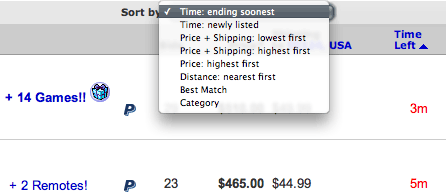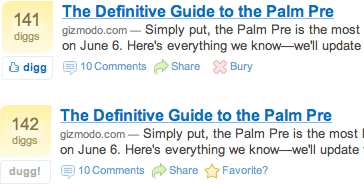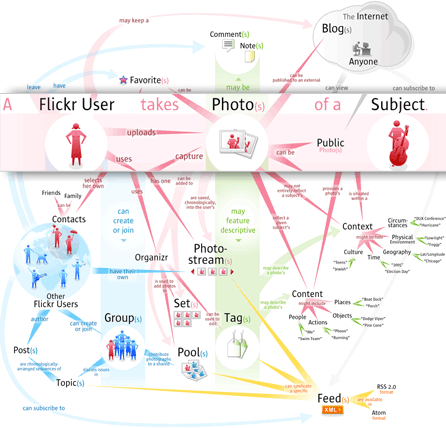Define Your Focus
The original goal company founder Pierre Omidyar laid out for eBay Inc. was “to create the world’s first global economic democracy.” Omidyar’s belief was that anyone in the world should be able to buy or sell any item at a fair price. So, he set out to create a “level playing field” that could make this aspiration a reality.
When measured against Pierre’s original definition, eBay did quite well. In 2005, this online marketplace was the 29th largest economy![]() in the world. eBay was available in 38 markets, had 700,000 sellers in the United States who made their full-time living on the site, was home to over half a million online stores across the world, and saw over $1,500 (US) of merchandise change hands on the site per second. As these statistics
in the world. eBay was available in 38 markets, had 700,000 sellers in the United States who made their full-time living on the site, was home to over half a million online stores across the world, and saw over $1,500 (US) of merchandise change hands on the site per second. As these statistics![]() clearly illustrate, the core of eBay—allowing anyone to buy or sell anything at a fair price—really came to life as the company grew. Along the way, Omidyar’s concise definition of the company helped it make many important decisions and still emerge with its core essence intact.
clearly illustrate, the core of eBay—allowing anyone to buy or sell anything at a fair price—really came to life as the company grew. Along the way, Omidyar’s concise definition of the company helped it make many important decisions and still emerge with its core essence intact.
Sometime around 2005, the company’s goal shifted from “enabling a global economic democracy” to “$8 billion in 2008.” (I’m not sure of the exact numbers.) While, a financial goal is a worthwhile pursuit for a publicly traded company, it doesn’t do much to tell people how they should operate. In fact, it’s not too hard to imagine how employees might make different product design and feature decisions if their goal is “$8 billion in 2009” versus “enabling a global economic democracy.”
Setting the right focus for your Web application with a clear and concise definition that people can readily understand not only helps your organization make the right decisions, it also benefits your customers. Without a definition of the core essence of your service, two things can go wrong:
- Customers may not understand the value your Web application provides.
- Your company may drift away from the value customers believe your service brings to the world.
Focus on the Core
Once you’ve clearly defined your product’s core, the crucial next step is bringing it to life. In most cases, there is some feature or product design decision that ultimately determines how a Web service will work. Sometimes, this decision is made deliberately, but other times, it’s a matter of happenstance.
What product design or feature decision was responsible for bringing eBay’s core to life? When asked, most people quickly assert that what most likely enabled its level playing field to thrive was the user feedback system that lets both buyers and sellers rate each other based on their previous transactions together. After all, ratings let people benchmark the credibility of others in the marketplace and thereby engage in fair trade with fair people. While the feedback system is indeed a crucial element of the eBay ecosystem, it may not have been the strongest enabler of its core.
That honor, as a product strategist at eBay once explained to me, belonged to the default sorting mechanism on the eBay search results pages. Whenever someone searched or browsed for an item on eBay, the results that came back were sorted by Time: ending soonest by default, despite the many other sorting options that were available, including price, category, best match, and other options shown in Figure 1.

The impact of sorting everything by time remaining meant that everyone got equal time in front of eBay buyers. Whether you were a big retailer or an individual seller, your product was first in line when your auction was about to expire. This system helped nurture the “level playing field” at eBay’s core. Everyone got prime shelf time for their items, so they could sell to anyone in the world at a fair price.
After more than twelve years without any change, eBay recently modified![]() this element of their user interface—instead sorting results by Best Match by default. What impact this will have on their core only time will tell. But it’s quite likely the eBay experience will no longer be focused on the level playing field that originally defined the company.
this element of their user interface—instead sorting results by Best Match by default. What impact this will have on their core only time will tell. But it’s quite likely the eBay experience will no longer be focused on the level playing field that originally defined the company.
Another example of how product design decisions can bring the core of a Web application to life comes from the social media site, Digg. Digg defines itself![]() as “a place where people can collectively determine the value of content.” The site’s digg button reflects its core—a single click lets people make a positive vote if they like a piece of content, as Figure 2 shows.
as “a place where people can collectively determine the value of content.” The site’s digg button reflects its core—a single click lets people make a positive vote if they like a piece of content, as Figure 2 shows.

The digg button is not only the most prominent element on the site’s home page; it’s also the central element on all of the site’s category pages and in activity streams as well. Content owners across the Web can embed Digg code on their own sites, so the digg button is available even off the Digg site.![]()
Digg founder, Kevin Rose, articulated the impact the single-click digg button had on his site: “When we made the move to the one-click digg, activity went through the roof. It was just insane! Just the ease of the one-click and you’re done made all the difference in the world.” Rose’s focus on getting this core element of the experience right clearly paid off.

